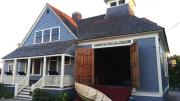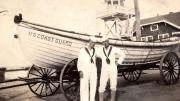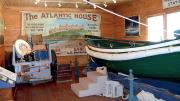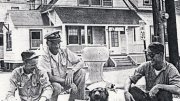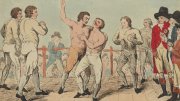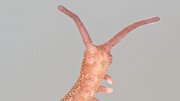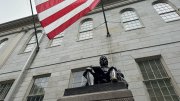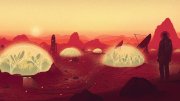The best route to Hull is by boat. As the MBTA’s commuter ferry snakes among Boston Harbor’s islands, passengers can eye the treacherous shipping route that gave rise to the town’s Point Allerton Lifesaving Station in 1889. Back then, the “small, year-round community had no more than 300 residents; at least a third of them were involved in volunteer lifesaving,” notes Victoria Stevens ’96, curator of the Hull Lifesaving Museum housed in the former station. The first paid keeper, the highly decorated Captain Joshua James, rescued more than 540 people in 60 years, most from schooners carrying cargo like coal and lumber along the Atlantic seaboard. In 1902, after a rescue drill, James disembarked on the beach, noted, “The tide is ebbing,” and dropped dead.
The museum features the surfboat he and his brother designed, used from the “Great Storm” of 1888 until 1927, along with a 1930s “breeches buoy” cart with a cannon and ropes used (until 1952) to launch a weight attached to a rope onto the deck of a foundering vessel. Survivors were hauled in by a rope-pulley system that included wooden paddles inscribed with instructions in Portuguese, French, Spanish, or English. (The museum also hosts the sobering bostonshipwrecks.org, which maps vessels lost in the harbor.)
The nation’s Life-Saving Service (1878) and Revenue Cutter Service (1790) were joined as the U.S. Coast Guard in 1915. “Coasties” replaced lifesavers at the station, before moving in 1970 to the current outpost, barely a mile away. The museum’s special exhibit, The Point Allerton Coast Guard, 1915-2015 (through November 30), celebrates the centennial with models of the Boston Lightship and a 44-foot motor lifeboat, and a four-foot image of the new National Security Cutter James (named for the Hull keeper). Other artifacts and oral histories reflect the integral role lifesavers have played in local life and lore. Take Roger: in 1958, the golden retriever wandered into the station, ate a steak off the counter, and never left, Stevens reports—except for joyrides on the town bus and jaunts to Jo’s Nautical Bar. The Coast Guard, with its new global-security mission, may be less of a community lifeline than in Roger’s day, but the bar’s walls, packed with lifesaving memorabilia and news of modern mariners, signal that Hull’s 10,000 residents are still tied to life on, and beside, the sea.
